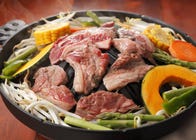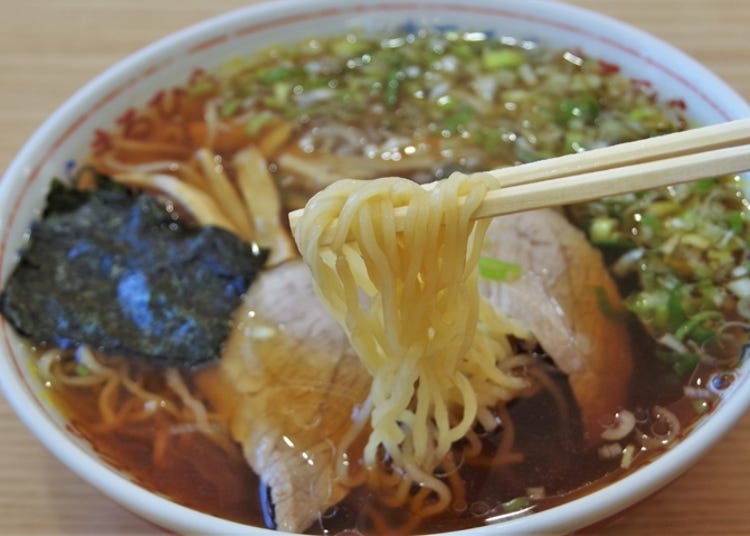
Kushiro Ramen is a local Hokkaido dish that you'll find in - wait for it - Kushiro! And you’ll find Kushiro in eastern Hokkaido. Hokkaido is famous for its ramen, and Kushiro Ramen is usually considered the fourth most famous after Sapporo ramen, Asahikawa ramen, and Hakodate ramen.
Kushiro Ramen is characterized by its light soy sauce flavor and thin noodles. These characteristics make the noodles and soup completely different to other ramen dishes you might find around Hokkaido. Here, we will take a look at three famous restaurants in Kushiro, and cover everything you need to know about Kushiro Ramen.
- Table of Contents
-
- What is Kushiro Ramen like?
- How is Kushiro Ramen different to Asahikawa Ramen, another soy sauce ramen?
- When was Kushiro Ramen created?
- Ramen Spot 1: Kawamura - Amazing broth in the shopping district
- Ramen Spot 2: Maruhira - Follow the scent of bonito to this long-standing restaurant
- Ramen Spot 3: Ramenya Natsubori - a popular spot using noodles with no egg or additives
What is Kushiro Ramen like?
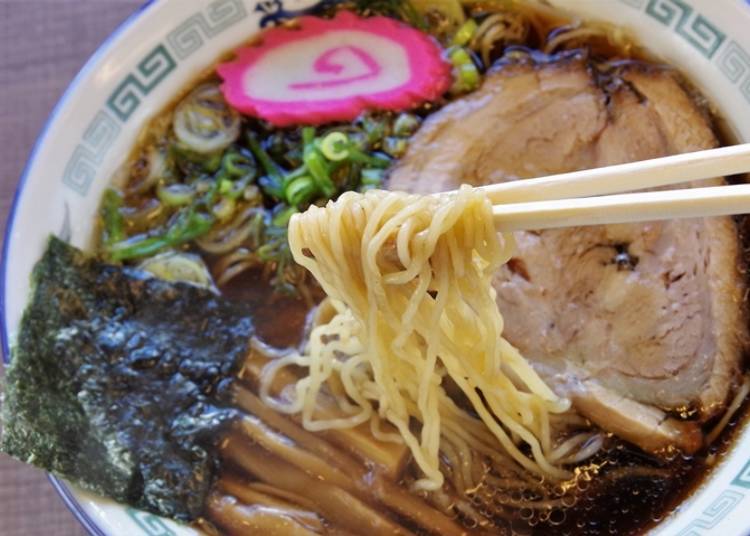
First, let's cover the basics: What is Kushiro Ramen like?
We asked the owners of "Kawamura", "Maruhira", and "Ramenya Natsubori" to tell us about the characteristics and history of Kushiro Ramen. Each of these ramen spots are famous for their Kushiro Ramen dishes.
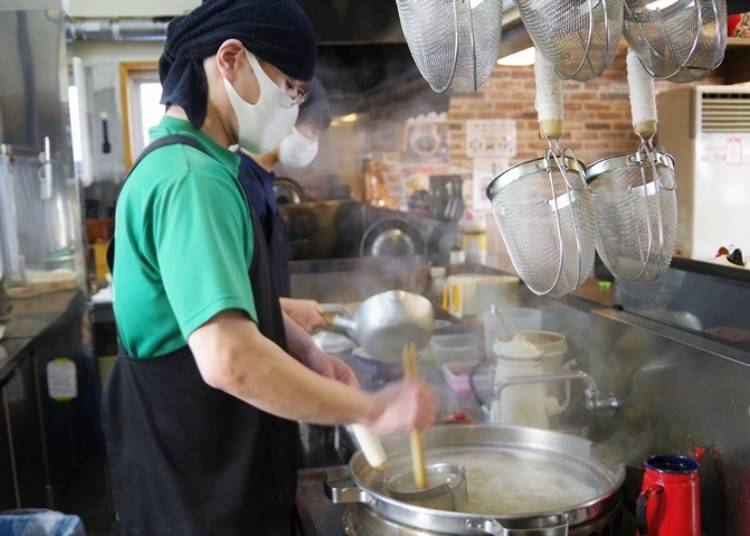
Kushiro Ramen is light in taste and low in fat, meaning it doesn't weigh down your stomach and is easy for almost anyone to eat. Kushiro Ramen is largely characterized by two things:
・ The noodles are quite thin and curly
・ The soup has a light soy sauce flavor, with hints of seafood from the stock, which often includes bonito
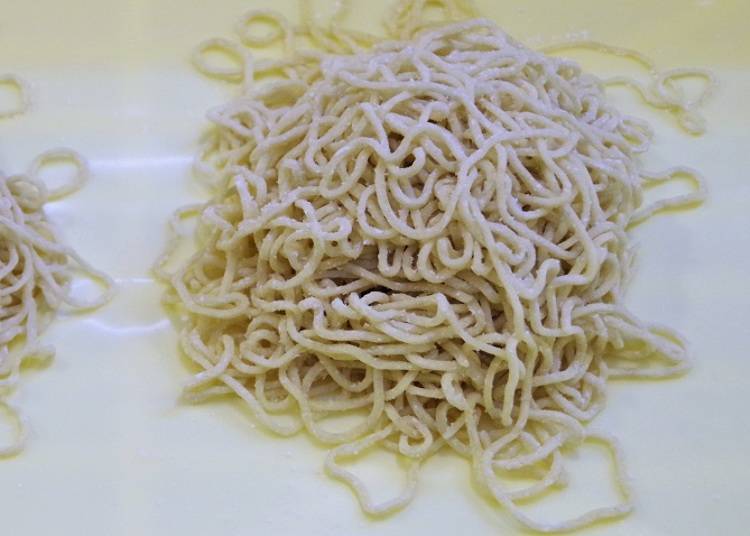
Kushiro ramen noodles are quite thin, and some restaurants boil them up in less than a minute from when the chef starts cooking.
The noodles get soggy if you leave them for any length of time, so for the best ramen experience, eat them as soon as the dish arrives in front of you.
Because the soup is so light, the light and curly noodles are paired with it to act as a good vehicle for the soup's flavors.
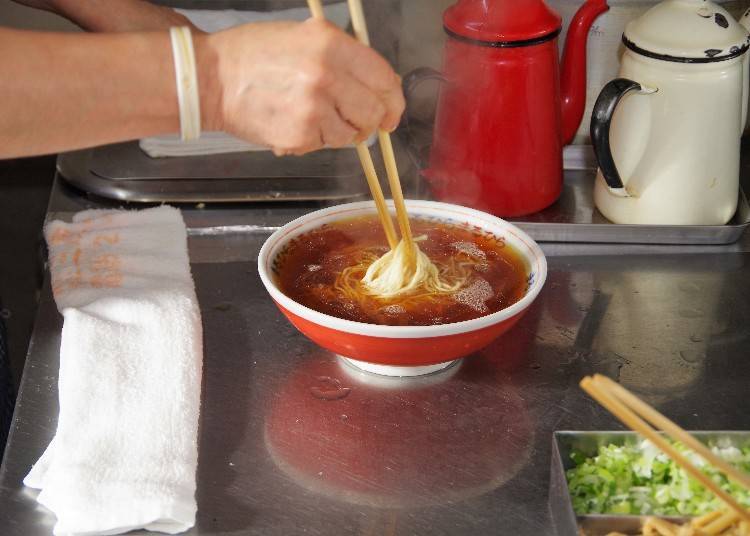
Although Kushiro Ramen traditionally has a soy sauce base, in recent years other flavor bases such as shio (salt) and miso have made their way onto the scene. Originally, the soup's focus was on seafood, and mainly bonito stock at that. But now in addition to bonito, each restaurant is adding their own twist to the dish, using ingredients such as niboshi (sardines) and kombu (kelp), chicken stock, and tonkotsu (pork broth) for the base. That said, the standard light soy sauce flavor and thin noodles of Kushiro Ramen remains the same.
How is Kushiro Ramen different to Asahikawa Ramen, another soy sauce ramen?
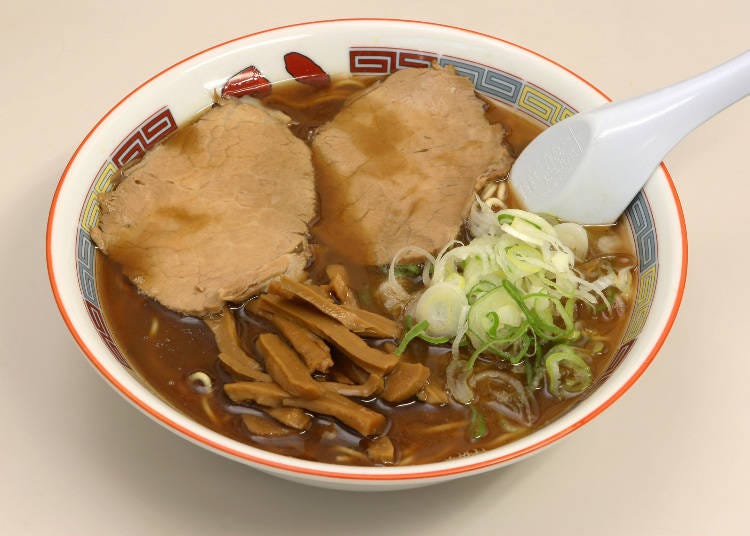
Around Hokkaido, the three main ramen flavors you'll find are Sapporo's miso-flavored ramen, Asahikawa's soy sauce-flavored ramen, and Hakodate's shio-flavored ramen (salt-flavored).
Although Kushiro Ramen and Asahikawa Ramen are both soy sauce-flavored, the noodles and soup taste completely different. For reference, the basic characteristics of Asahikawa ramen are:
・ Medium-thick, crimped noodles
・ A blended base of pork broth and seafood stock, resulting in a rich and fatty soup, flavored with soy sauce
Kushiro Ramen is light in taste with thin, curly noodles, but Asahikawa ramen has slightly thicker noodles than Kushiro ramen and a richer taste. Although we've mentioned that Kushiro Ramen has a delicate flavor, that is not to say it lacks flavor. Rather, the salt and fat content is lower, so you can taste the notes of the seafood broth much more easily.
When was Kushiro Ramen created?
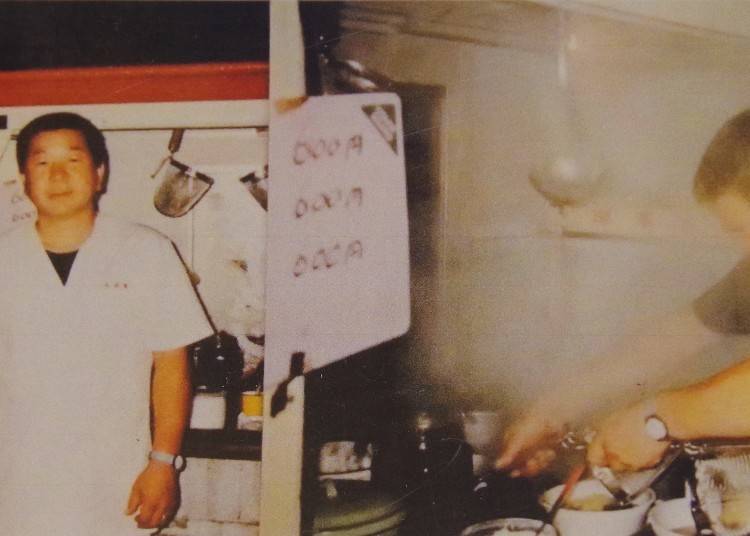
There is no precise information about the origin of Kushiro Ramen. But one theory says that it originated from the Chinese-style noodle dish known as "Shina Soba", which was brought to Kushiro from Yokohama in the 1900s by a chef who owned a Chinese restaurant. Shortly after, Kushiro began thriving in the fishing industry, so many ramen stalls opened up near the harbor to serve the hungry fishermen.
By the 1950s there were tons of ramen stalls in the area. In the late 1900s, that number dropped drastically due to various factors like land use regulations. So the number of permanent stores increased instead. Nowadays, there are no longer any ramen stalls around Kushiro, and it is said that only stores with permanent fixtures are in business.
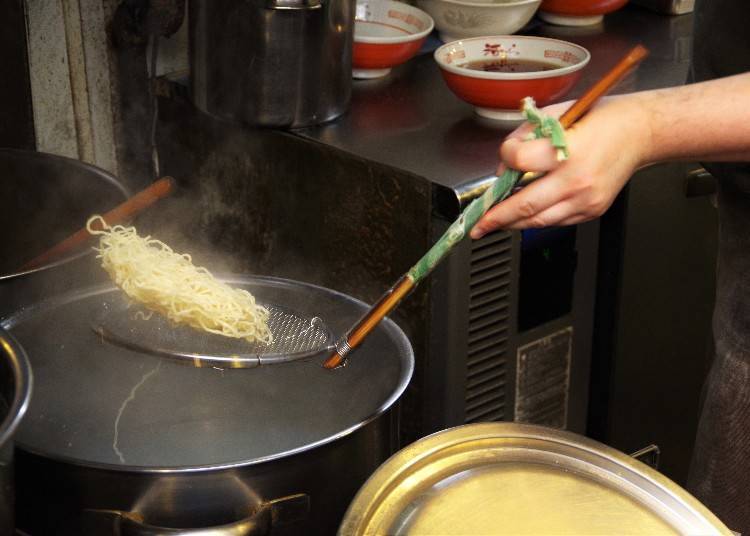
It's thought that the reason Kushiro Ramen noodles are thin and the soup is light is because they were served at stalls for fishermen. Many of the fishermen had very little time between getting on and off the ships, so the ramen is said to have been made to serve to them quickly. The noodles are very quick to boil, and the soup is light and easy to eat quickly without feeling slowed down and sluggish.
It's also said that the stalls had fairly weak heating appliances, meaning the easily-boiled noodles were more practical.
Ramen Spot 1: Kawamura - Amazing broth in the shopping district
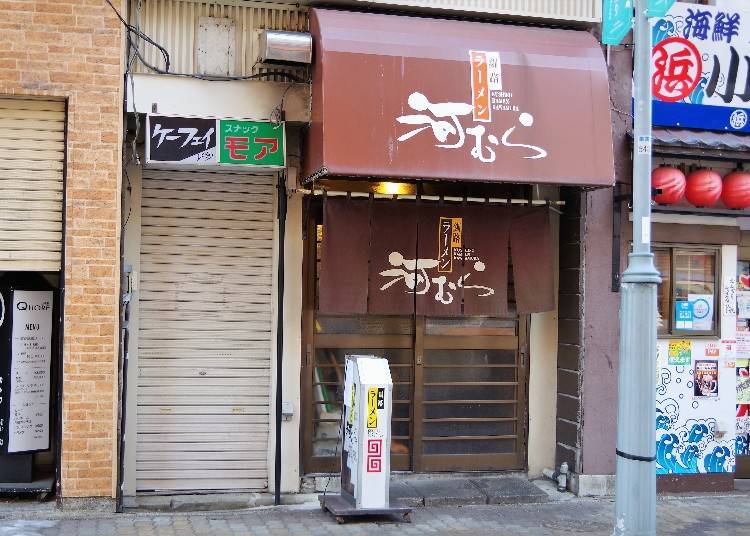
Kawamura, founded in 1989, specializes in traditional Kushiro ramen, and is run by the parents and children; two generations side by side. It is a short 10-minute walk from JR Kushiro Station, and about a 3-minute walk from Nusamai Bridge, a famous tourist attraction.
Open day and night, it attracts all kinds of customers: From workers on their lunch break and casual tourists, to locals on their way back from drinks, and travelers staying in nearby hotels. It's not uncommon to find international guests here, so there is a section of the menu dedicated to other languages.
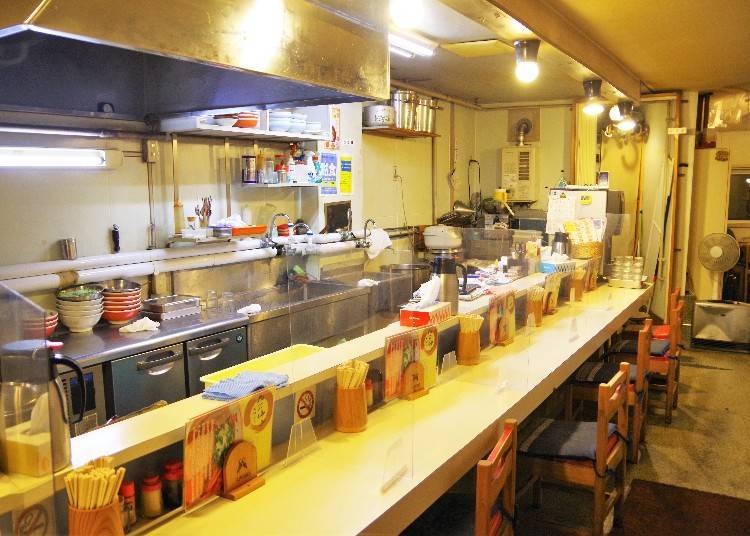
In addition to the shoyu (soy sauce) ramen, there is also shio (salt) and miso ramen on the menu, and you can add more char siu and wontons as a topping if you like. But the star of the show is of course the traditional soy sauce-flavored Kushiro Ramen. If it's your first visit, go straight for the soy sauce ramen.
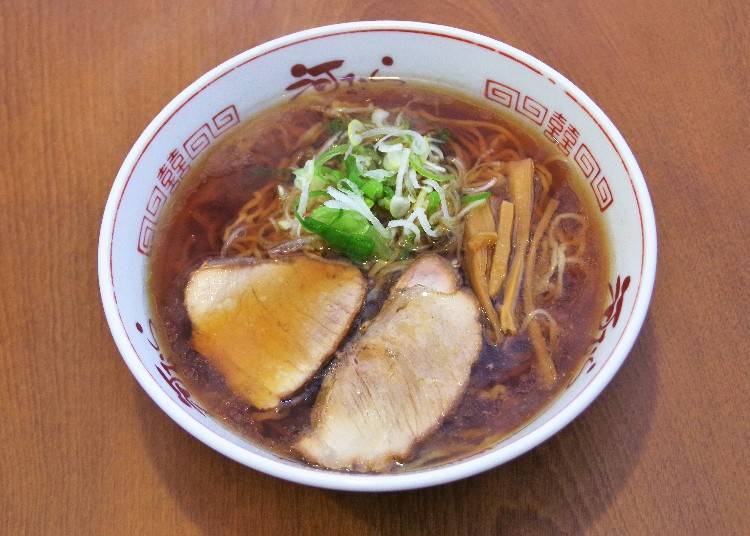
At Kawamura, their traditional soy sauce-flavored Kushiro Ramen recipe has remained through the years, so you can taste the original natural flavors of the unbeatable soup stock. Other than soy sauce and salt, they are quite reserved with their addition of other flavorings.
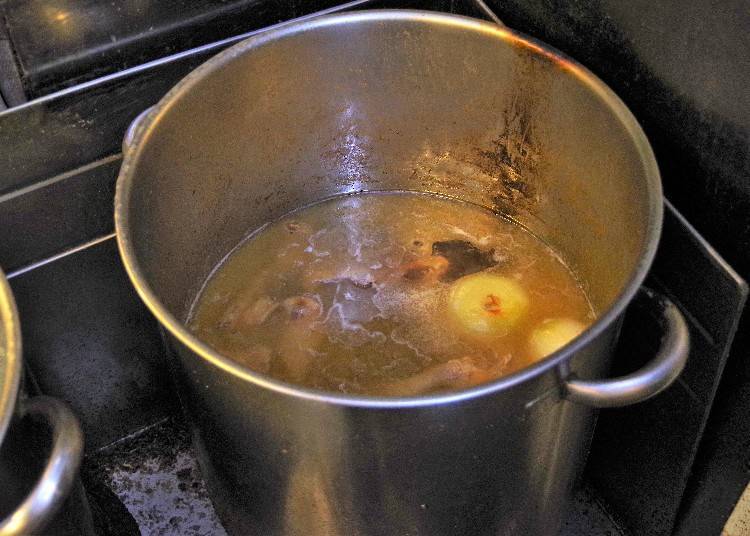
What makes the soup so delicious is that they use a number of different fish such as bonito (flaked with a traditional kezuri method) to make the broth. All that is added is chicken broth and onion before simmering. This method has been used for over 30 years, and is put on the burner every day without fail. By adding salt or soy sauce to this soy sauce "tare" (ramen base), you get the soy sauce ramen and shio ramen.
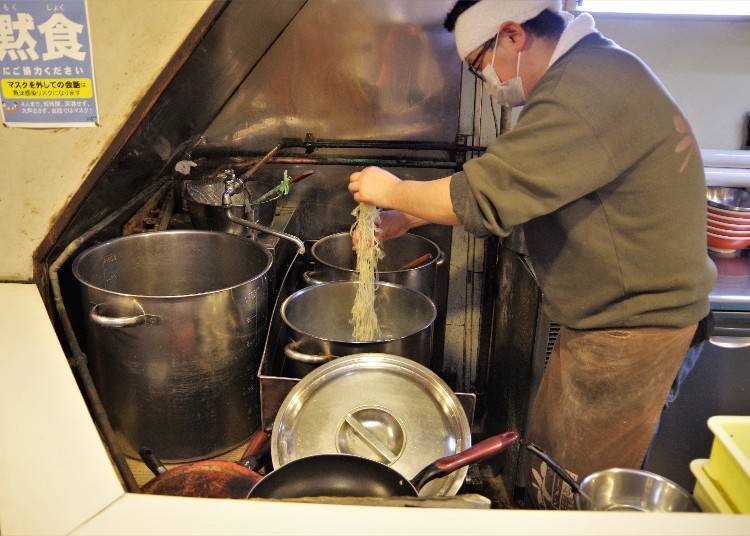
The noodles are ordered from a noodle maker who makes them exclusively for Kawamura. To make it easier for the noodles to take in the soup's flavors, the noodles are loosened as soon as an order comes in, and are then boiled. The noodles spend about a minute in the water, and once the chef starts cooking it's not long before they arrive in front of you.
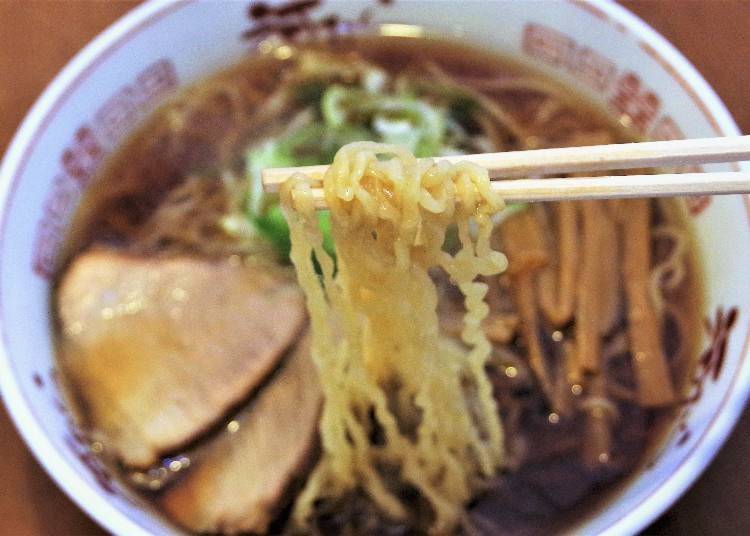
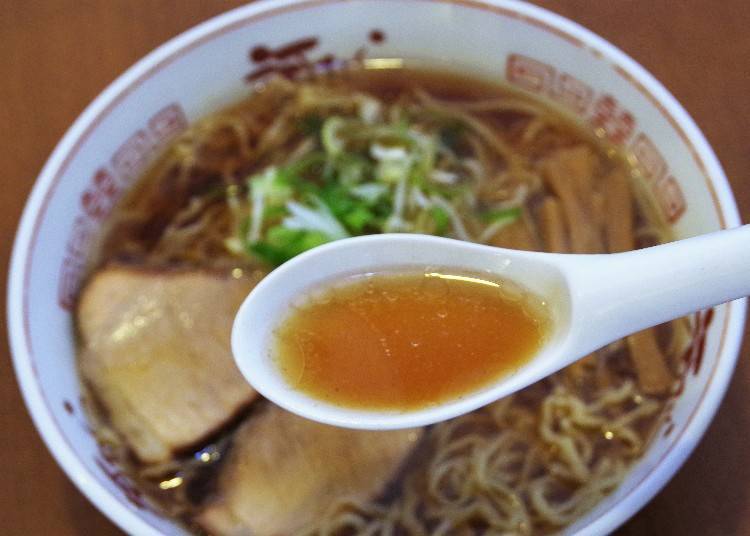
The soup is less salty than other ramen and feels almost refreshing to drink. The delicate flavor brings out the umami of the bonito and chicken stock. It's the kind of umami-packed soup that makes you want to analyse every flavor with your tastebuds.
Health & Safety Measures
Indoor disinfection measures taken - Sanitizer installed - Disinfected after each guest leaves - Ventilation measures in place - Coin trays used - Plastic partitions installed - Staff wear masks, gargle, wash hands regularly, and monitor body temperature - Limited capacity/increased space between seats - Restricted admission - Entry declined to anyone who is feeling unwell - Guests are required to wear masks.
-
Kawamura河むら
- Address 5-2, Suehiro, Kushiro, Hokkaido, 085-0014
- Phone Number 0154-24-5334
Hours
Weekdays and Saturdays: 11:00 - 14:30, 18:00 - 24:00, Sundays and public holidays: 11:00 - 14:00
Closed: Irregular closing days
*Please note that opening hours and other factors may change in response to COVID-19.
Ramen Spot 2: Maruhira - Follow the scent of bonito to this long-standing restaurant
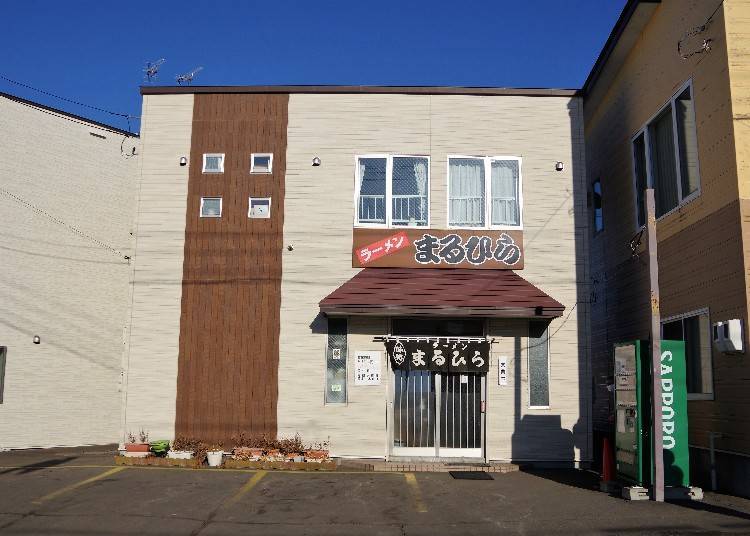
Founded in 1959, Maruhira is a long-established ramen restaurant that can be found amidst a residential area. Since its opening it hasn't changed location, and is now being run by its fourth generation of husband and wife. Sometimes open in the morning, the spot used to be popular among drivers. But lately, tourists and non-locals have caught wind of it and come for breakfast and lunch, too.
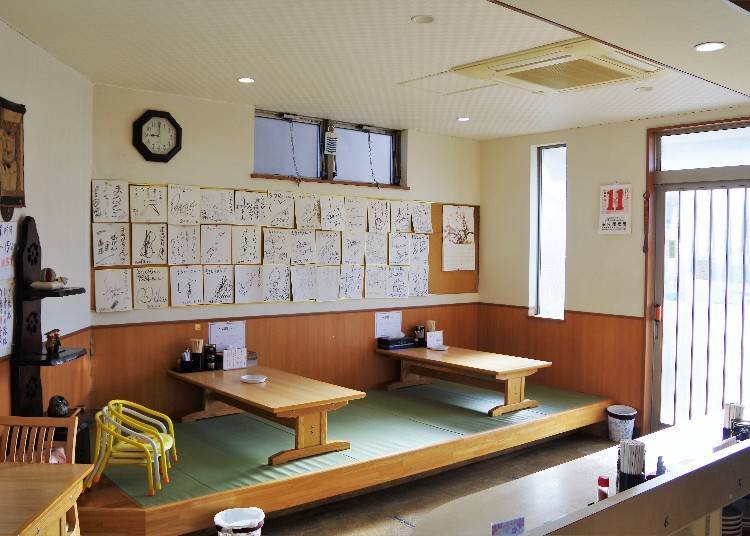
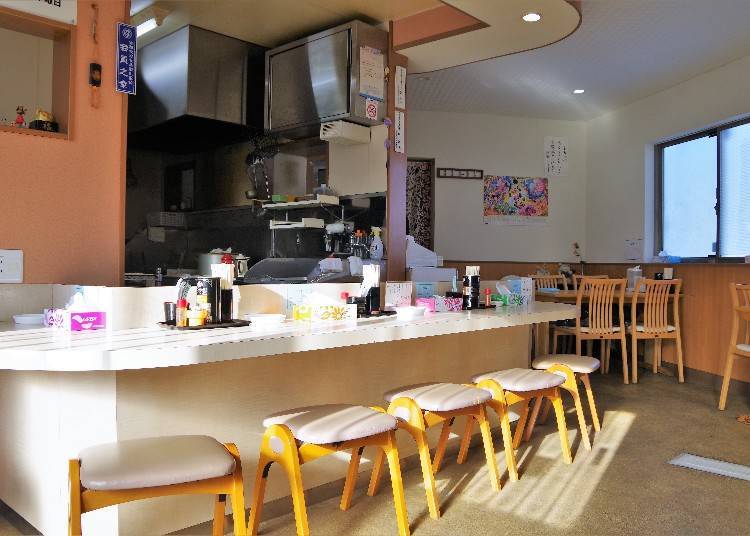
Entering the store along with the morning sun, you'll find the faint aroma of bonito broth drifting towards you. Maruhira's ramen uses thin noodles and a katsuobushi (bonito flakes) broth. Just like the Kushiro Ramen of old.
The menu is not available in other languages, but the choices are very limited. You can choose from 醤油 (shouyu; soy sauce flavor) or 塩 (shio; salt flavor). From those two options, you can choose the size: 普通盛 (futsuu mori; regular), 大盛 (oo mori; large), or 特盛 (toku mori; extra large). And that's it! So no need to worry if you can't read Japanese, simply say one of the readings above, such as "futsuu mori no shoyu ramen onegai shimasu" (one regular soy sauce flavor ramen please).
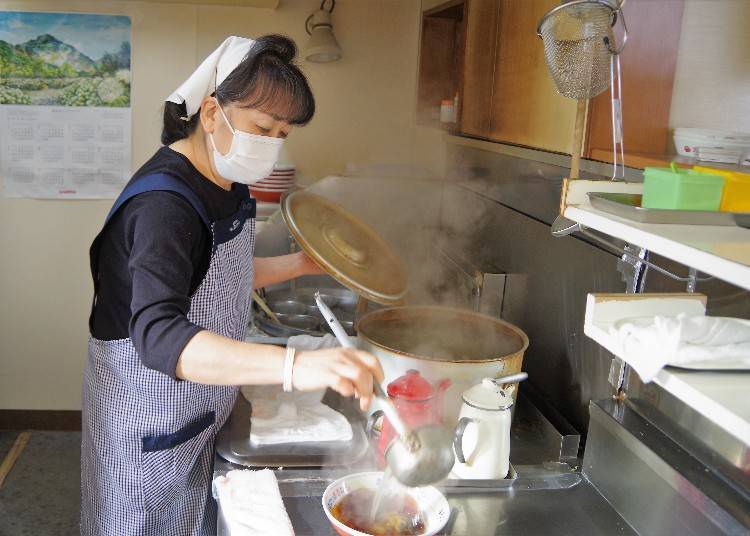
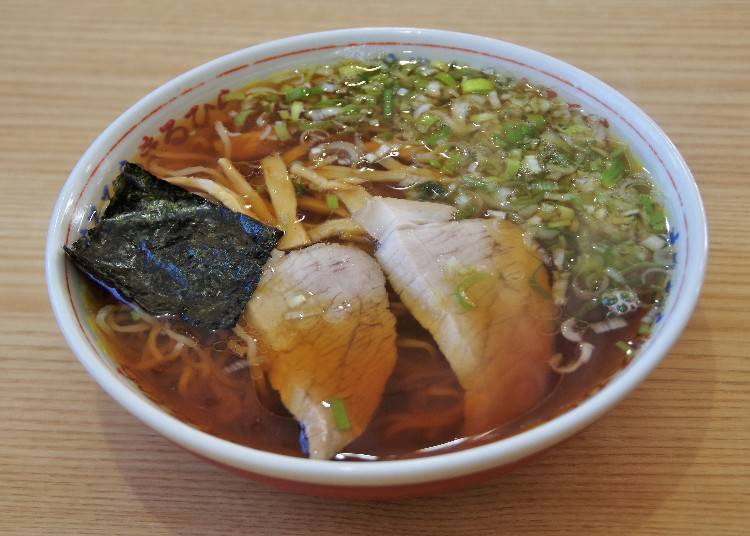
As you bring the soup to your lips, the bonito aroma drifts to your nose. The refined savory aroma is not unlike that of other traditional Japanese cuisines, such as soba soup or suimono (clear broth). The flavor is nice and delicate, so you can eat it even in the morning without worrying about the impact on your stomach for the day ahead.
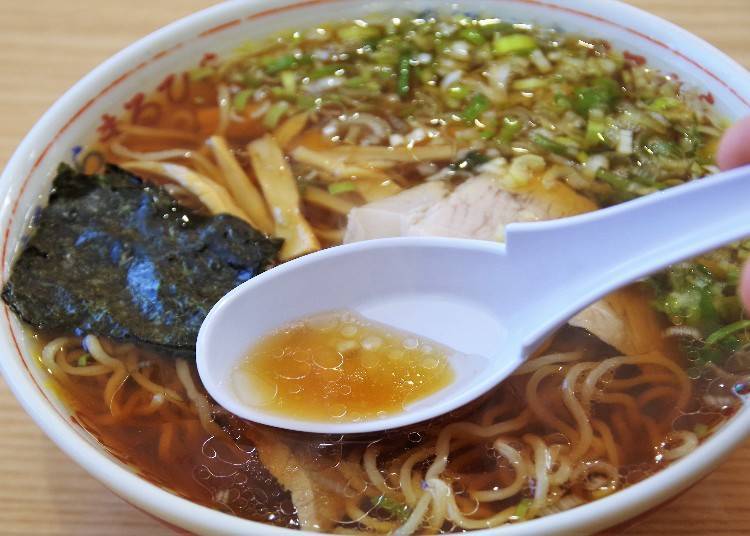
Because of the thin noodles and short boiling time, the ramen comes out very quickly after ordering. As this is a very popular ramen spot, there is almost always a line outside of the restaurant even from early in the morning. But as the turnover is so quick, you're unlikely to have to wait for very long at any given time.
Health & Safety Measures
Indoor disinfection measures taken - Sanitizer installed
- Disinfected after each guest leaves - Ventilation measures in place - Plastic partitions installed - Staff wear masks, gargle, wash hands regularly, and monitor body temperature - Limited capacity/increased space between seats - Restricted admission - Entry declined to anyone who is feeling unwell - Guests are required to wear masks
-
Maruhiraまるひら
- Address 8-1-13, Urami, Kushiro, Hokkaido, 085-0835
- Phone Number 0154-41-7233
Hours: 9:30 - 15:00
Closed: Wednesdays
*Please note that opening hours and other factors may change in response to COVID-19.
Ramen Spot 3: Ramenya Natsubori - a popular spot using noodles with no egg or additives
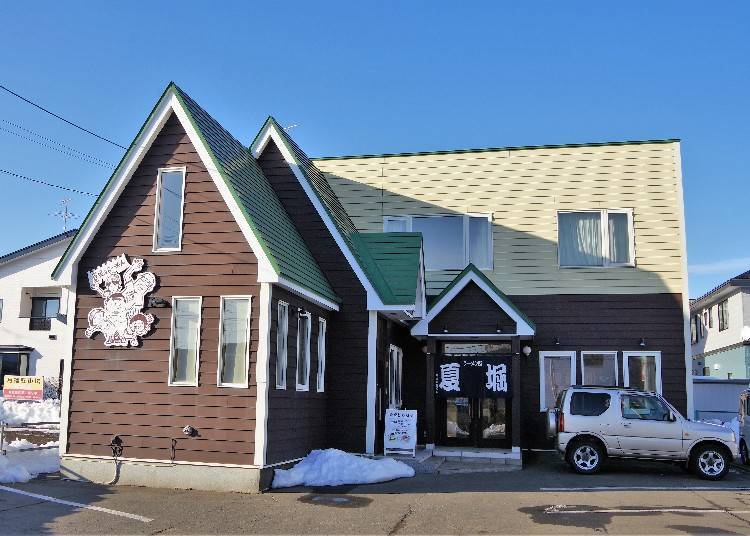
With origins as a street vendor, Natsubori Ramenya is a very popular spot. Originally, the founder ran a rice shop in Kushiro, but with the help of a friend studied the ways of ramen, leading to the stall's opening in 1997. After that, the rice shop was remodelled into a ramen restaurant and moved to its current location in 2014.
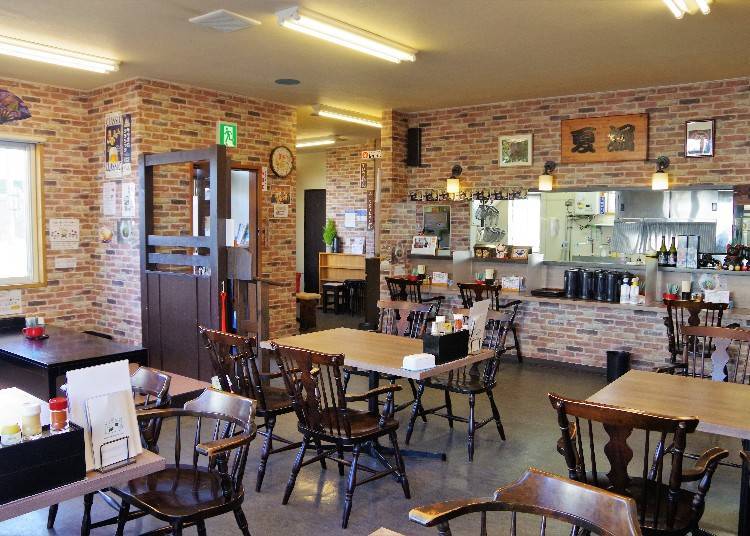
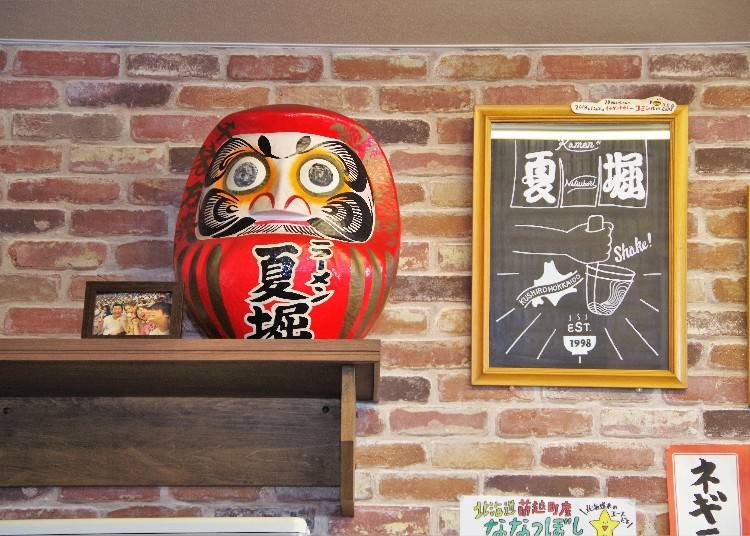
Natsubori Ramenya offers soy sauce ramen, shio ramen, and miso ramen. Toppings include leeks and vegetables, and you can increase the oyster and char siu toppings to your liking. There is no menu in a foreign language in the restaurant, but there are photos of the food on the homepage of their website with accompanying English.
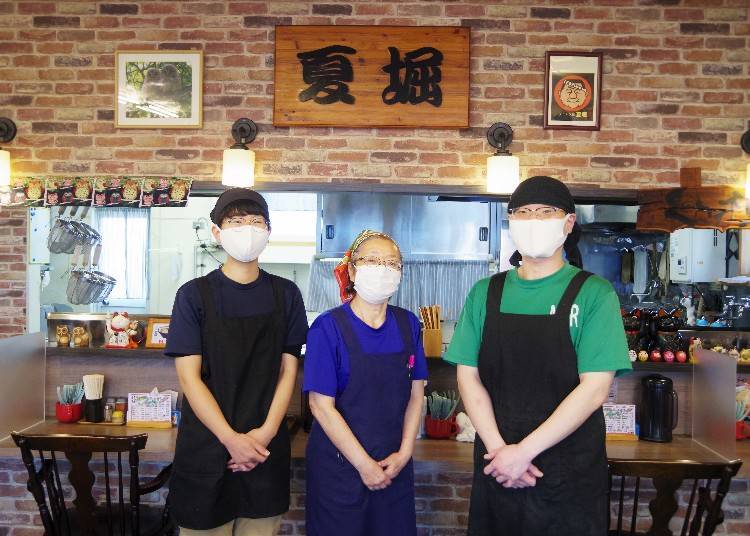
The soup is made up on 15 ingredients, including chicken stock, katsuobushi (bonito flakes), kombu (kelp), pork broth, vegetables and others. Here, salt and miso are combined with their homemade tare (ramen base) to make their different menu items.
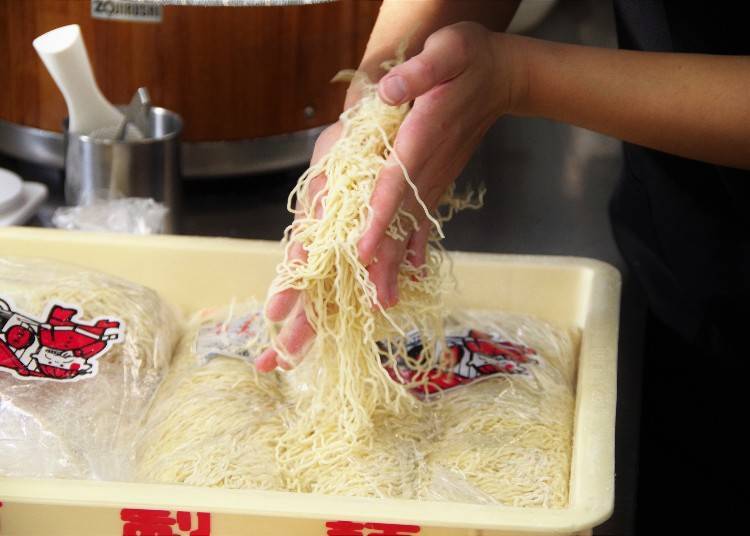
There are two types of noodles: thin noodles and medium-thick noodles. The thin noodles are served with the shoyu ramen and shio ramen, whereas the medium-thick noodles are served with the miso ramen. However, even though they are referred to as medium-thick noodles, they are actually much thinner than what you might consider medium thickness elsewhere. And the thin noodles are more like somen or vermicelli. No preservatives or eggs are used in the noodles, so people with egg allergies can eat them with peace of mind.
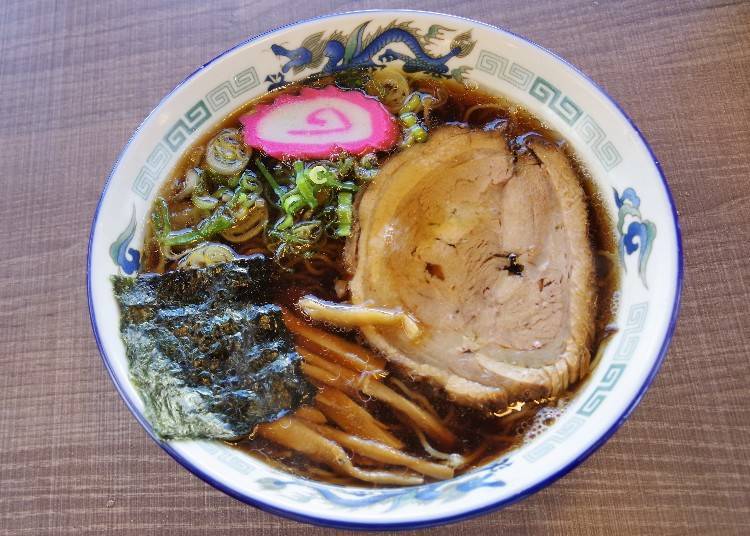
The shoyu ramen is light, but has a deep flavor that brings out the best of the various ingredients in the soup. The scent of soy sauce and bonito prepares your senses for the delicious flavors of the ramen. The char siu topping is made with pork belly from Hokkaido that has been simmered for hours, giving it an umami punch and a melt-in-the-mouth texture.
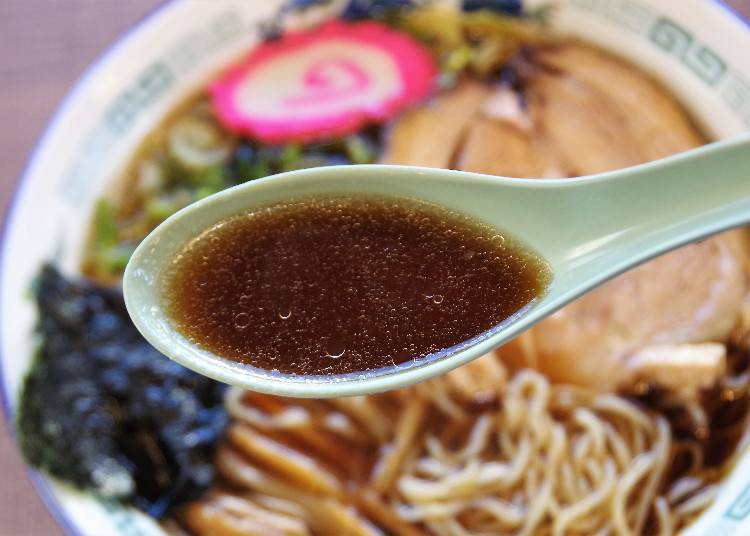
The "Negi Ramen" with plenty of soy sauce and green onion is also a popular choice. Along with the classic soy sauce flavors, you can enjoy the contrast of the bite of the noodles and the crunch of the green onion.
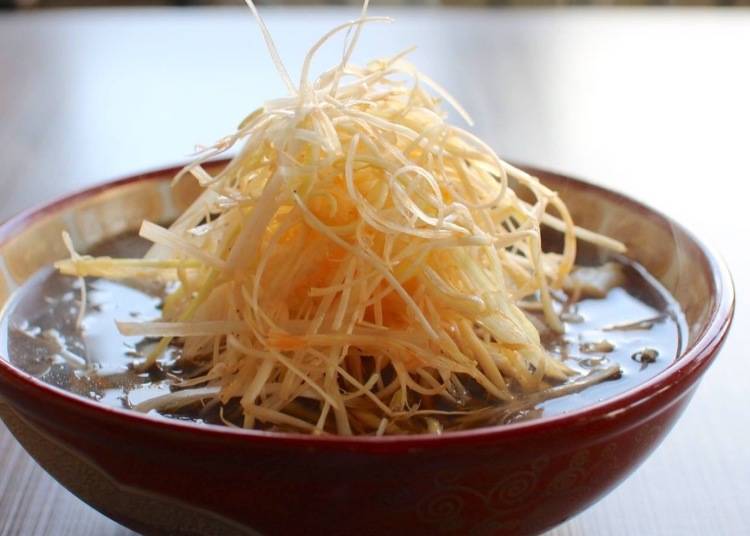
Here, they use ingredients from Hokkaido as much as possible. Among the many Kushiro ramen noodles, here you can enjoy top-class ultra-fine noodles and soups with a wide variety of umami-packed flavors.
Health & Safety Measures
Indoor disinfection measures taken - Sanitizer installed - Disinfected after each guest leaves - Ventilation measures in place - Coin trays used - Plastic partitions installed at counter - Staff wear masks, gargle, wash hands regularly, and monitor body temperature - Limited capacity/increased space between seats - Restricted admission - Entry declined to anyone who is feeling unwell - Guests are required to wear masks
-
Ramen-ya Natsuboriラーメン屋夏堀
- Address 4-4-3, Kasuga, Kushiro, Hokkaido, 085-0041
- Phone Number 0154-35-3812
Hours
Weekdays: 11: 00-14: 45, Saturdays, Sundays, and holidays 11: 00-14: 45/17: 00-19: 45
Closed: Wednesdays
*Please note that opening hours and other factors may change in response to COVID-19.
Hokkaido is often considered the ramen kingdom, with a variety of ramen restaurants dotted throughout the region. However, Kushiro Ramen is not often seen outside of Kushiro itself, so it's a must when traveling to the area! At its base, Kushiro Ramen uses thin, curly noodles, a light seafood soup base, and a soy sauce flavor. But the taste varies greatly from shop to shop. If you have the time, why not travel around and try out some different versions?
Text by:川島 暢華 (Kawashima Yuka)
Translation by: Cassandra Lord
*The information in this article is based on information correct as of March 2022. Please check the official websites for the latest information.
*Prices and options mentioned are subject to change.
*Unless stated otherwise, all prices include tax.
Limited time offer: 10% discount coupons available now!
Recommended places for you
-
Appealing
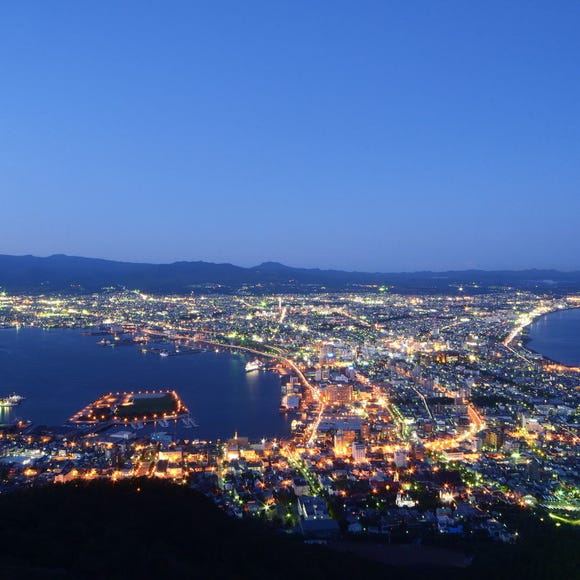
Mt. Hakodate Observatory
Forests & Mountains
Hakodate
-
Appealing
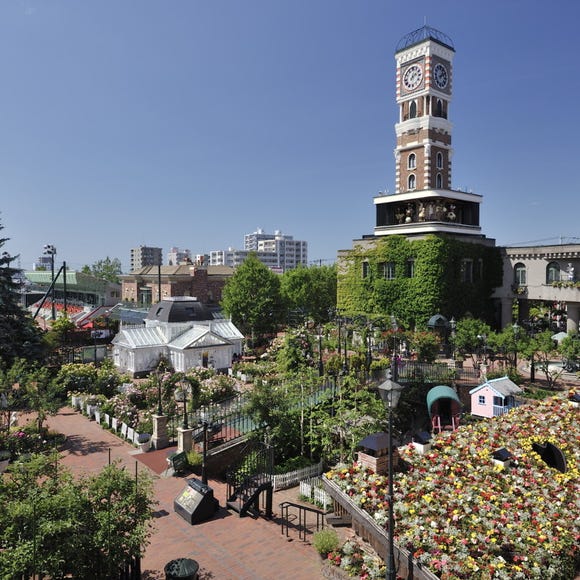
Shiroi Koibito Park
Theme Parks
Sapporo / Chitose
-
Appealing
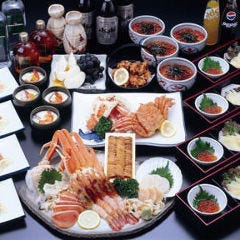
Rukku and Uohei
Izakaya
Sapporo / Chitose
-
Appealing
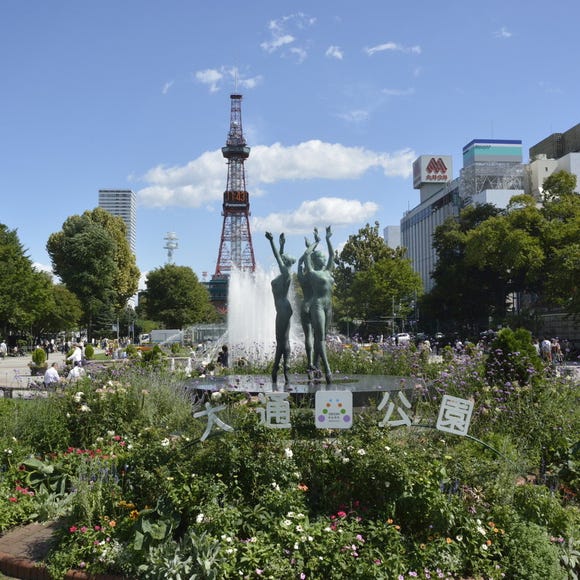
Odori Park
Parks
Sapporo / Chitose
-
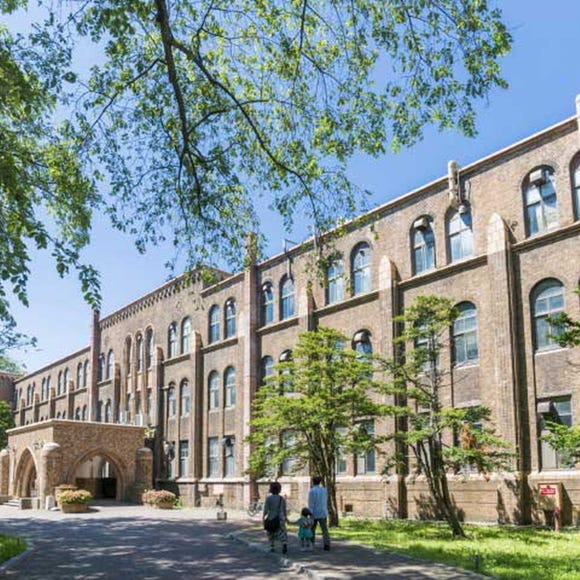
Hokkaido University
Other Architecture
Sapporo / Chitose
-

Farm Tomita
Other Nature
Furano / Biei / Sounkyo
-
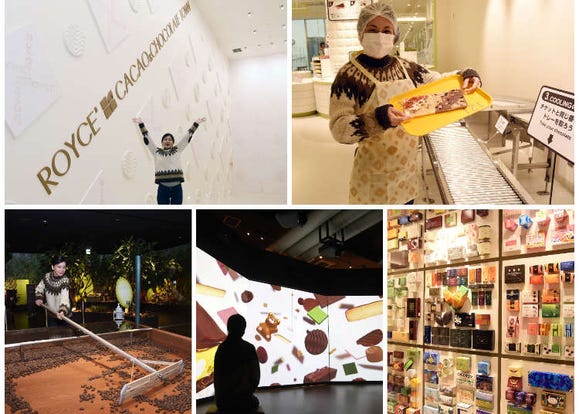
Hokkaido's ROYCE' Cacao & Chocolate Town: Fun Factory Tour & Chocolate Making Experience
-
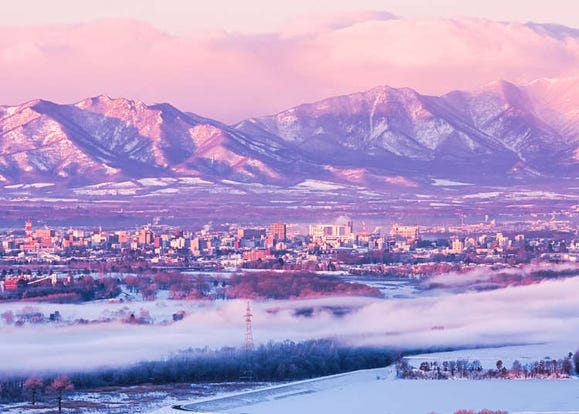
Your Trip to Obihiro (Hokkaido): The Complete Guide - Activities, Hotels, Savers & More
-
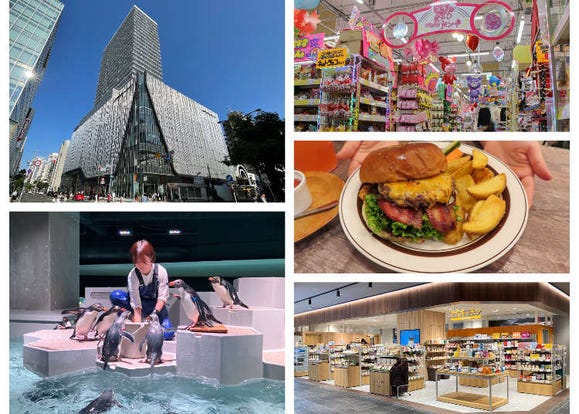
Exploring Moyuk Sapporo: A New Tanukikoji Landmark with an Aquarium and New Donki Store!
-
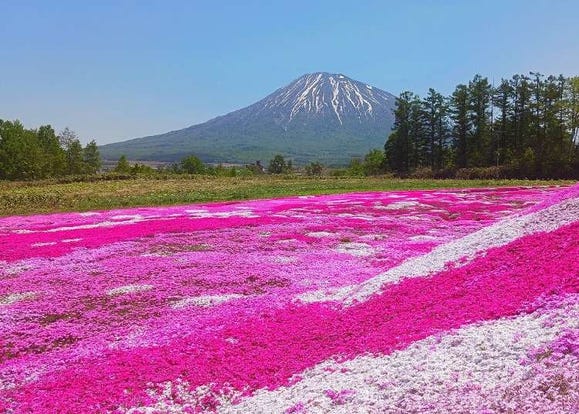
4 Must-Visit Spots for Beautiful Pink Moss Phlox Carpets in Hokkaido: Monthlong 'Floor Sakura' Viewing
-
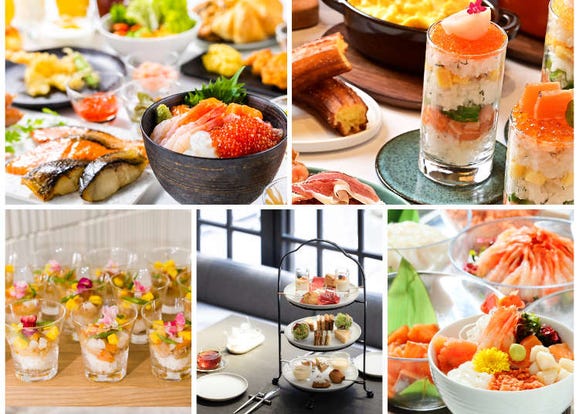
Expert-Recommended! 5 Otaru Hotels with Great Breakfasts
-
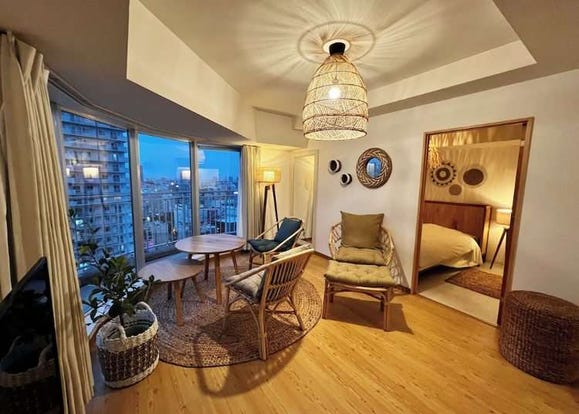
Family-Friendly Accommodations: 5 Recommended Apartment Hotels in Sapporo (Hokkaido)
-
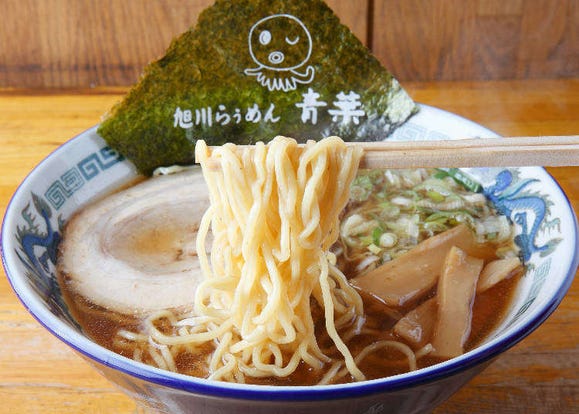
Noodle Up: These 5 Unique Types of Hokkaido Ramen Are Insanely Addictive!
-
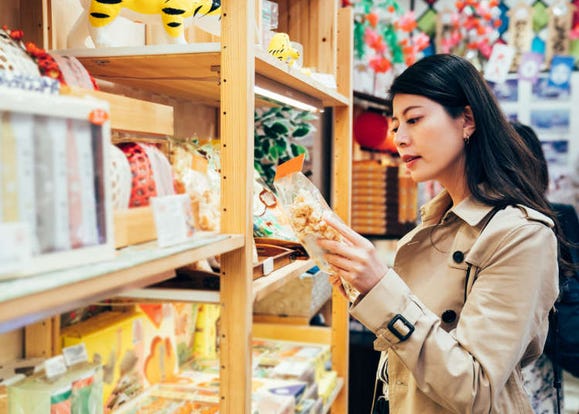
6 Surprisingly Cheap Things in Japan
-
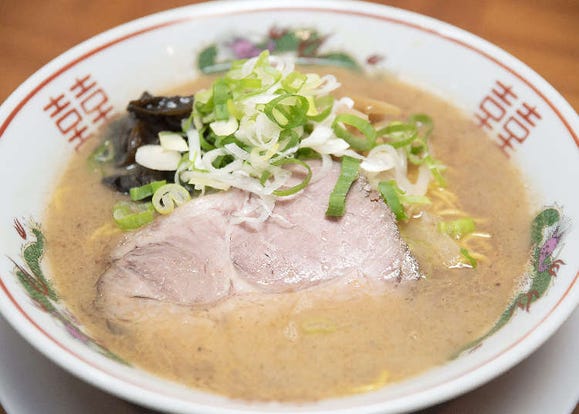
Top 6 Ramen Shops in Odori: The Birthplace of Sapporo Ramen
-
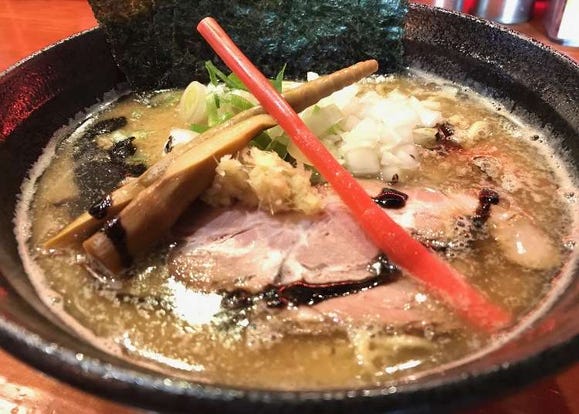
What the Locals Love! 5 Best Susukino Ramen Shops in Sapporo For 2021
-
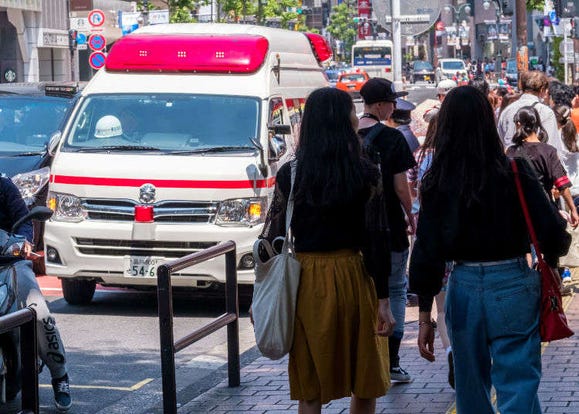
Healthcare in Japan for Tourists: What to Do When You Get Sick or Injured in Japan
-

What to Pack for Japan: 8 Essential Things for a Hassle-Free Trip
- #best sushi hokkaido
- #things to do hokkaido
- #best ramen sapporo
- #what to bring to japan
- #new years in tokyo
- #what to buy in ameyoko
- #japanese nail trends
- #what to do in odaiba
- #onsen tattoo friendly tokyo
- #daiso
- #best sweets otaru
- #japanese fashion culture
- #best nature furano
- #japanese convenience store snacks
- #best japanese soft drinks













